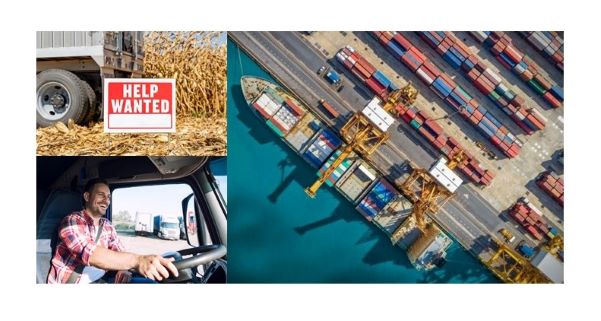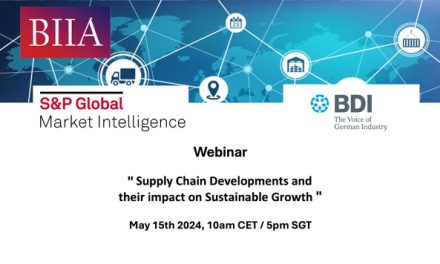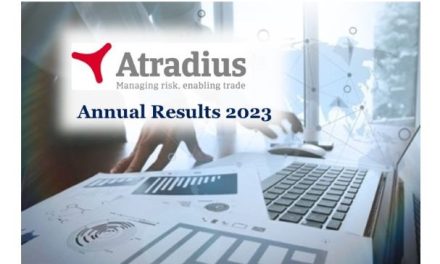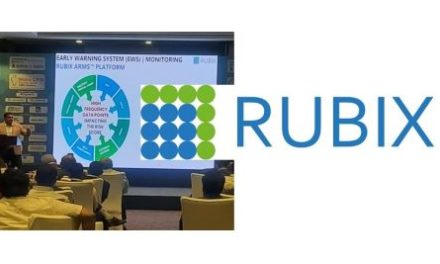Risk managers are facing a new challenge: How to assess the impact of current supply chain problems and labor shortages on credit risk?
Long Lasting Crisis Number One – Supply Chain
The supply chain collapsed in 2020-2021 – that much is obvious to anyone who has waited months and months for the delivery of some item, part or assembly. The reasons for the collapse have been less obvious. The current narrative has been that all of this can be attributed to the pandemic and its impact on ports in Asia as well as in the US. The inference is that everything will tilt back to normal in the coming year as the virus threat fades. The reality is that these supply chain strains have been manifesting for years and only accelerated during the pandemic.
The supply chain crisis is not temporary and will be with us for years. This has been forcing companies to develop long term strategies and solutions that will alter many current patterns.
Analysis: The threats to business from the supply chain include constant congestion at various points in the transportation system. It is not just at the ports. The levels of highway congestion affect local delivery times, shortages of warehouse space force deliveries to more distant locales, air cargo has been affected by reduced routes. The ports have been unable to expand as they have been locked in by development and so on. There are also consistent shortages of key workers. There are not enough truck drivers – estimates indicate a deficit of over 100,000 drivers due to retirement and expanded need. There are not enough longshoremen or warehouse workers or pilots for cargo planes or railroad workers – the list goes on and on. Then there is the role of inflation as commodity prices have kept rising throughout the crisis. The producers are behind in their efforts to meet demand. You get the idea. There is no single culprit as far as the supply chain crisis is concerned and the majority of the efforts thus far have been band-aids. Forcing ports to function 24/7 did not address labor shortages or backlogs – all it did was pull freight off some ships so it could stack up on the dock. Now there are plans to allow the stacks to go higher despite the fact this will cause more damage to containers.
The solutions will have to go far beyond these emergency measures. At this stage there are three strategies emerging.
- The first is a short-term reaction and involves buying as much as one can get hold of. This is either hoarding or stockpiling according to how polite one wants to be about describing it. There are dangers in this approach as the demand may not support all this extra buying.
- The second and more permanent strategy has been to shift suppliers away from areas that have been hit by the supply chain breakdown. Companies are leaving China is search of other partners but there is nothing to suggest that these new arrangements will be any more stable over time.
- That leaves the third and most involved strategy. The number of companies considering reshoring has increased dramatically. The estimate is that $1 trillion will be spent on reshoring and onshoring in 2022 and some have asserted this number could be as high as $3 trillion. The decision to reshore also means a strategic shift away from the idea of outsourcing in general. Companies have been instructed to stick to their core competence and outsource everything else but that carries risks. Control over both upstream and downstream activity is lost when there is outsourcing and now companies are seeking to regain that control by doing their own production of ancillary parts again.
Long Lasting Crisis Number Two – Labor
This is another of those issues that has suffered from incomplete analysis. The narrative has been all about the employment crisis in 2020 and the assertion that millions of people just don’t seem to want to work. The fact is the evidence does not support that assumption.
The issue is really pretty simple and is rooted in demographics. The warning signs have been about as obvious and inevitable as time itself. The Baby Boomers were born between 1946 and 1964. The first of the Boomer retirements started in 2011 and the tail end of the generation will hit 65 in 2029. There have been around 10,000 Boomers hitting retirement every day for years and that has added up. Those Boomers that had been putting off retiring reconsidered during the pandemic and this has left a major gap in the workforce that will not be addressed for many years.
Analysis: There are only a few ways to address a reduced labor force. The current approach has been to find ways to keep that older worker engaged but there are obvious limits to how long this strategy can be deployed. There can be an attempt to get more people to have families but this is no instant solution unless we also plan to radically alter child labor laws. That leaves immigration as the only option and it has traditionally been the approach the US has engaged in. The challenge now is that the US needs skilled, experienced and educated arrivals and these are the same people that every country wants to attract. The US is no longer the chosen location for the people with the skills needed.
This puts even more emphasis on improving the productivity of our existing workforce. The fact is that training has always been very haphazard in the US. The education system pays very little attention to what the business community wants or needs. The emphasis has always been on educating the “well rounded citizen” and choice has been left to the students themselves. There are far too many getting educations that do not translate well to long term employment. The business community is not capable of doing all the training itself as most businesses are small to medium sized. They need a pipeline of people with some knowledge of the job they have been hired to do. The business response has been to substitute robotics and automation for people whenever possible. The labor shortage is destined to get worse and worse as the rest of the Boomers step aside. There are not enough people arriving from other nations and training is always a slow process. The result is chronic labor issues and that translates into  wage inflation as the needed workers will have more leverage than ever.
wage inflation as the needed workers will have more leverage than ever.
Source: Curtesy of ARMADA Corporate Intelligence


























